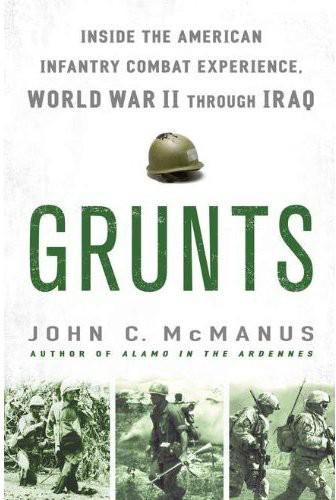
Grunts
Inside the American Infantry Combat Experience, World War II Through Iraq
کتاب های مرتبط
- اطلاعات
- نقد و بررسی
- دیدگاه کاربران
نقد و بررسی

June 1, 2010
A look at the role of infantry and the common soldier's experience in America's wars.
McManus (Military History/Missouri Univ. of Science and Technology; American Courage, American Carnage: 7th Infantry Chronicles: The 7th Infantry Regiment's Combat Experience, 1812 Through World War II, 2009, etc.) studies ten typical actions: four from World War II, three from Vietnam, one from the first Gulf War and two from the current war in Iraq. They run the gamut from triumph to near-disaster, although all are technically American "victories," and they all show how infantrymen serve as the key element in warfare. The author makes it clear that he believes that war is ultimately about men doing the dirtiest of jobs—killing other men, often hand to hand, to secure control of some piece of ground their superiors have ordered them to take. In fact, McManus chooses several battles (e.g., Peleliu in the Pacific, Dak To in Vietnam) to demonstrate how the leadership's trust in bombing, artillery and other methods of "softening up" an enemy ignored the harsh realities of what the grunts eventually have to do. At Peleliu, the U.S. naval bombardment of the island left the Japanese defenders in fortified positions strong enough to take a heavy toll on the Marines sent to expel them. At Dak To, U.S. forces were lured into a battle for essentially useless territory, where the Vietnamese could engage them on favorable terms and withdraw seemingly at will. Even while describing successful actions, McManus does nothing to prettify the brutal face of combat. Drawing on firsthand accounts of participants, he makes his case that, whatever the promises of the "techno-vangelists," the infantrymen "have done almost all of the fighting and dying in America's modern wars." In particular, the author holds up as models the Marine combined action platoons of Vietnam, who lived among the native population, learning their language and customs—and were undercut by higher-ups' intent on body counts. A similar approach has worked in Iraq, he argues. McManus ends with "A Plea for Change," urging better recognition of the critical role and central importance of the combat soldier, without whom he says no nation can be safe or strong.
Not for the squeamish, but full of valuable insights.
(COPYRIGHT (2010) KIRKUS REVIEWS/NIELSEN BUSINESS MEDIA, INC. ALL RIGHTS RESERVED.)

July 1, 2010
The author of the fine history of the 7th Infantry Regiment returns with another demonstration of his skill at narrating infantry combat. He offers a historical retrospective, contrasting different types of battle in which American grunts have been engaged. We have the easy victory on Guam in 1944, against poorly-organized Japanese, and the bloody slugging match against dug-in Japanese on Peleliu. The battle for the German city of Aachen in 1944 features the free and decisive use of superior American firepower, while more recently in Falujah, Iraq political constraints added to our casualties. Similarly, the Marine Combined Action Platoons are contrasted with larger and often less-effective operations. The book is clearly intended as an argument for a strong presence of well-trained infantry operating up close and personal with heavier firepower available as support but not substitute. Both readable and persuasive.(Reprinted with permission of Booklist, copyright 2010, American Library Association.)

























دیدگاه کاربران